(Click on any image to view it in high resolution.)
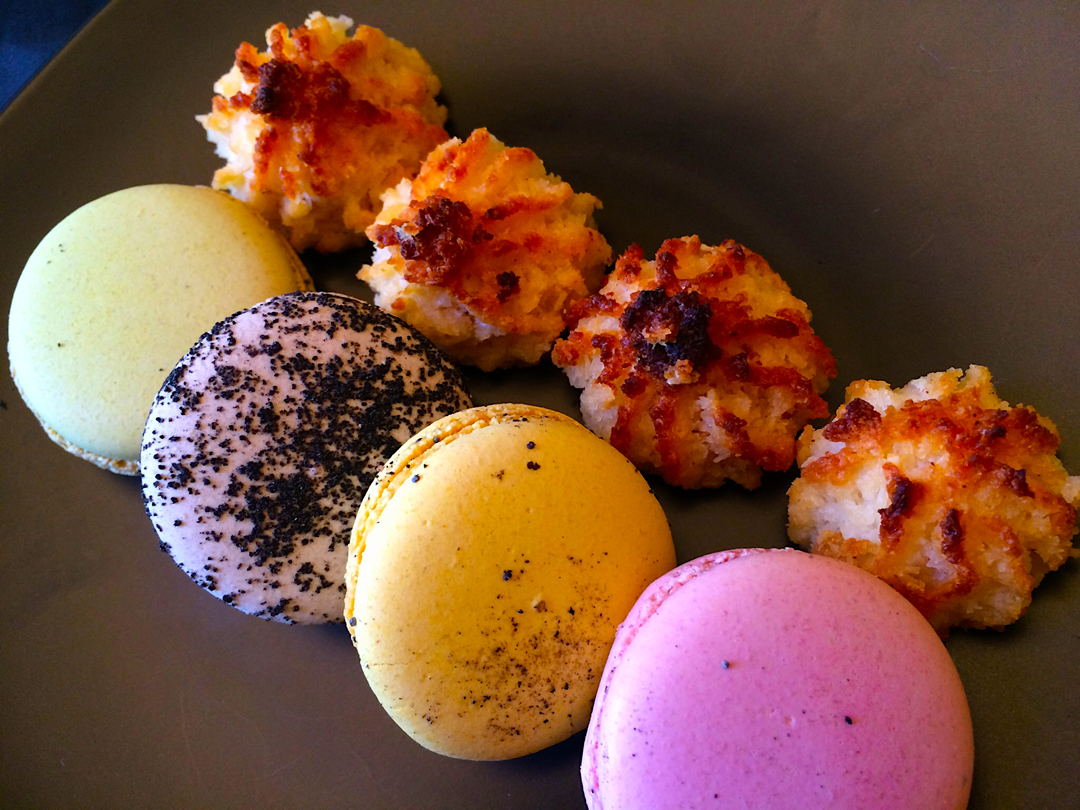
There seems to be some confusion regarding these two very dissimilar cookies with very similar names, but oh, what a difference an O makes.

(Click on any image to view it in high resolution.)
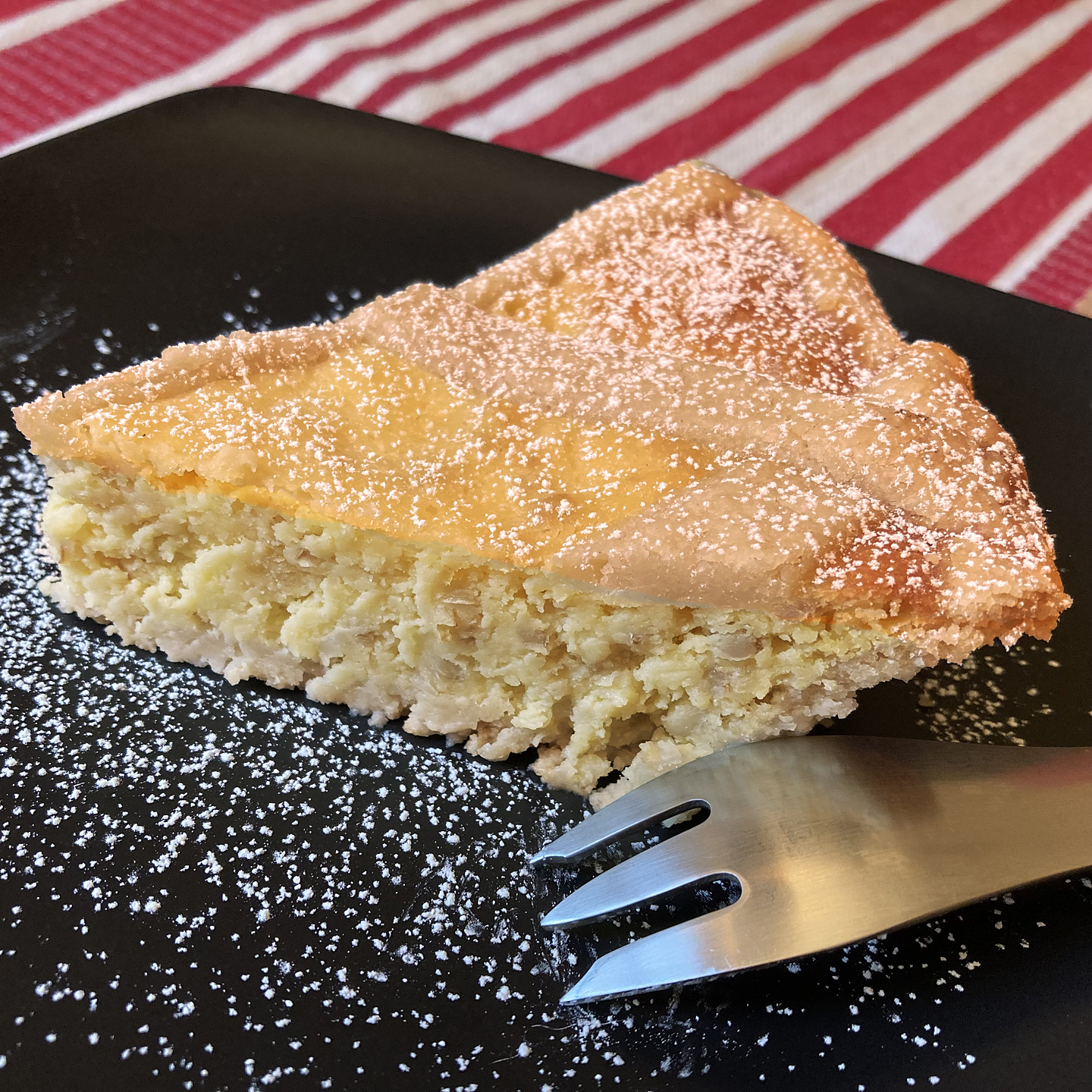
If you follow me, you know that I’m a sucker for international holiday foods, sweet treats in particular. And since I live from holiday to holiday (hey, whatever works, right?), I always look forward to Easter for traditional Neapolitan Grain Pie.
For starters, don’t be deterred by its name in English; I suspect “Pastiera Napoletana” has a more agreeable ring to it. The aforementioned grains are wheat berries, and their presence is no more unusual than grains of rice in rice pudding. They’re embedded in a sweet ricotta/custard cream infused with orange blossom water and augmented by bits of candied orange peel and citron along with a touch of cinnamon; the heady aroma of orange and lemon is key to its success. The rich filling is swaddled in a delicate, crumbly shortcrust shell.
This example came from Court Pastry Shop, 298 Court St in Brooklyn; I’ve written about them here, here, and here – they’re that good.
Per favore, if you have a solid Italian bakery nearby or even a bit of a walk away (think of the calories you’ll burn!), head out there and try this delicacy for yourself while the season is still upon us. Grazie!
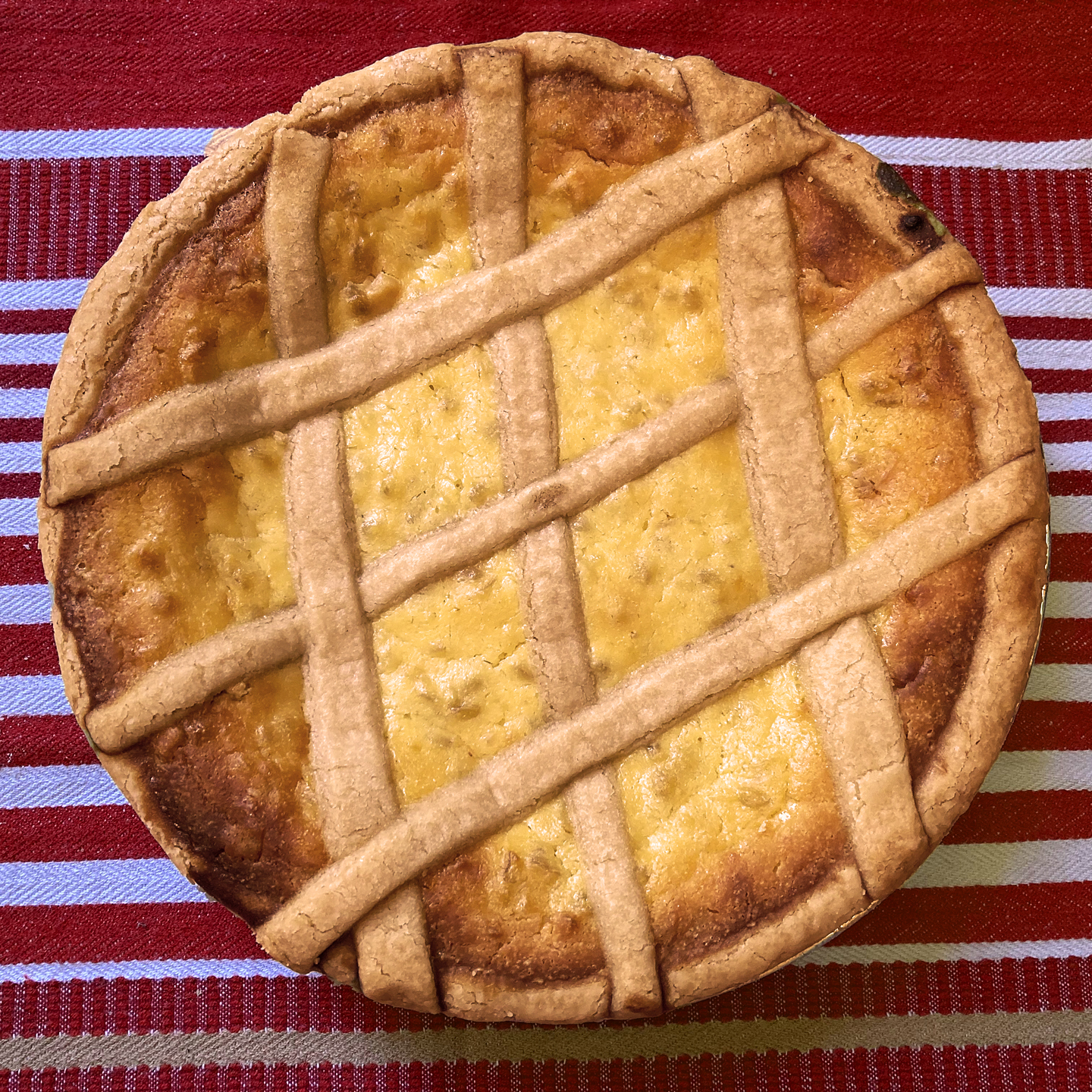
(Click on any image to view it in high resolution.)
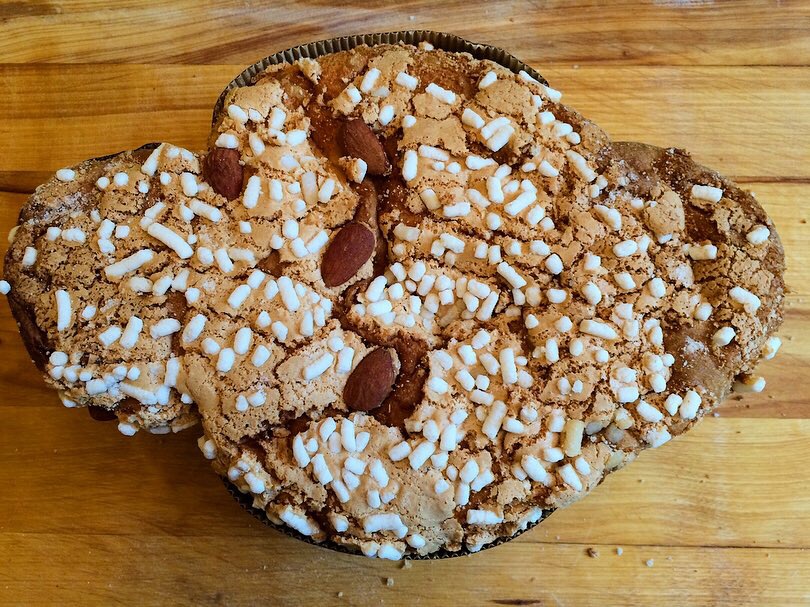
Two notable celebrations of the season, Easter and Passover, are concurrent this year. It’s no coincidence that the Italian word for Easter (pasqua) and the Hebrew word for Passover (pesach) are closely related, although culinarily the holidays couldn’t be more disparate. During this time of year, Jewish families are expunging their homes of even the most minuscule crumb of anything leavened, and Italians are baking Easter breads like they’re going out of style.
Italy’s traditional seasonal bread is La Colomba di Pasqua (“The Easter Dove”), and it is essentially Lombardy’s Eastertime answer to Milan’s Christmastime panettone. These deliciously sweet, cakey breads, in some ways Italy’s gift to coffeecake but so much better, are fundamentally the same except for two significant distinctions: the colomba is baked in the shape of the iconic dove that symbolizes both the resurrection and peace, and the recipes diverge with the colomba’s dense topping of almonds and crunchy pearl sugar glaze. Traditionally, a colomba lacks raisins, favoring only candied orange or citron peel, but as with panettone, fanciful flavors (including some with raisins) proliferate.
The first photo shows a colomba in all its avian splendor. Frankly, I think it’s a leap of faith to discern a dove in there, but if you can detect one, you may have just performed your own miracle.
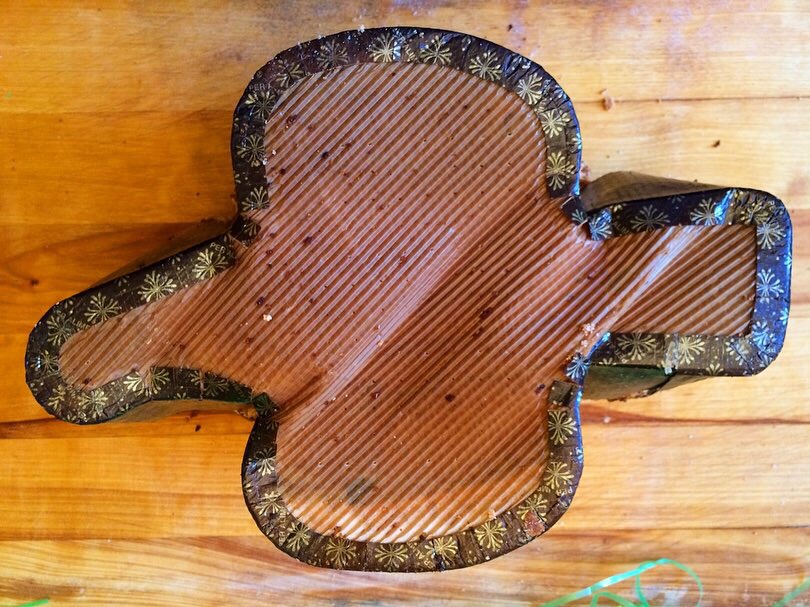
Hard pressed to see the dove? Fret not, for this photo has the cake turned upside down so the columbine form is somewhat more evident.
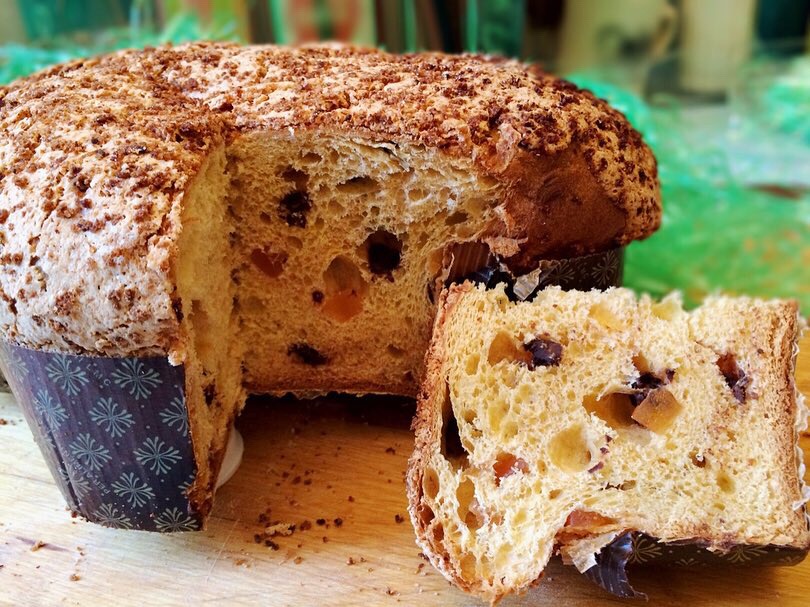
The third photo depicts a version that features bits of chocolate and dried peaches within and crunchy crushed amaretto cookies atop.
Just wondering: There’s no debate that American kids bite the ears off their chocolate Easter bunnies first. Do you suppose that Italian children start with the head, tail, or wings of the colomba?
(Originally posted in April, 2019.)
(Click on any image to view it in high resolution.)
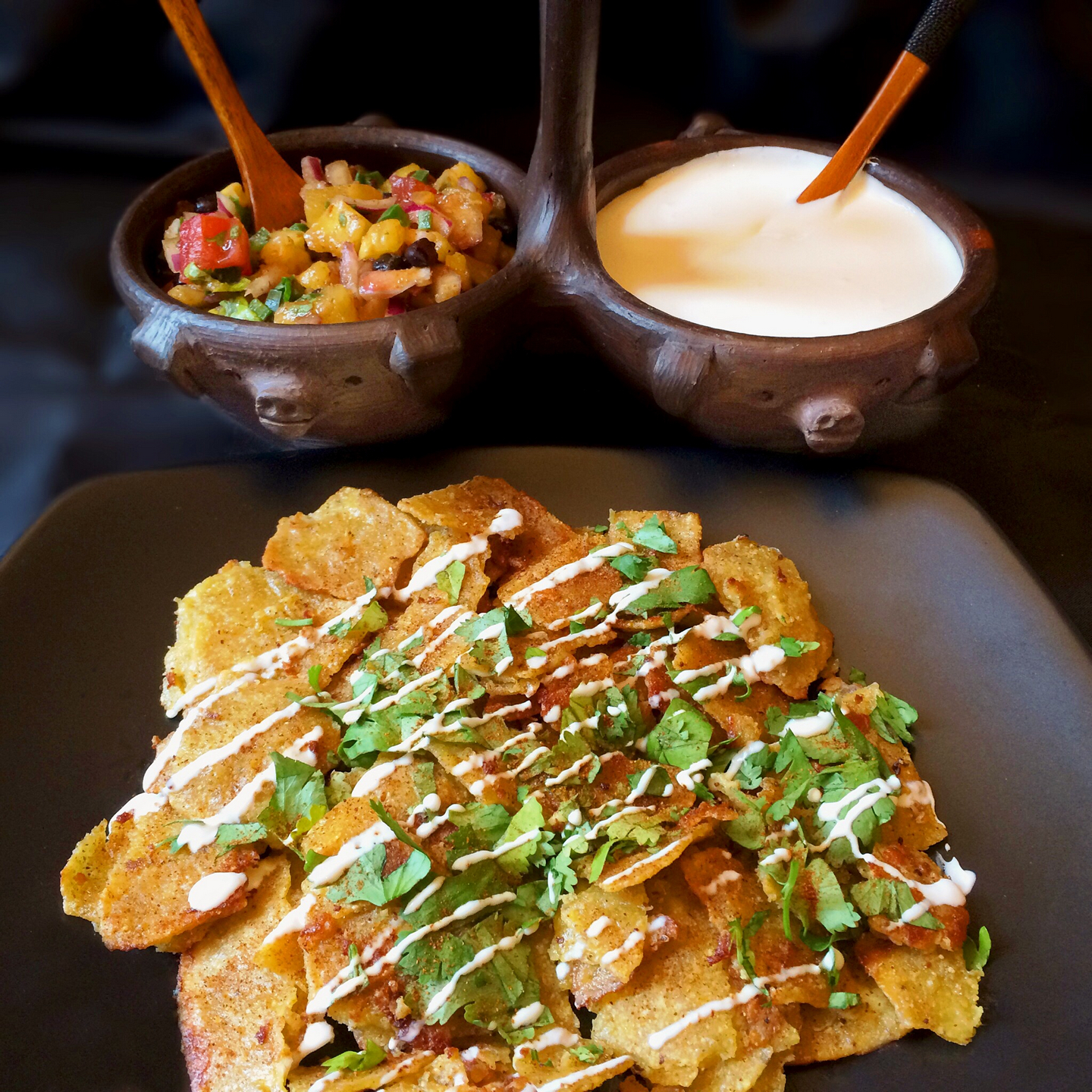
Previously on ethnojunkie.com, I did a springtime post that included a story about someone who dared me to come up with an ethnic fusion Passover menu. I wrote:
Well, far be it from me to dodge a culinary challenge! So although obviously inauthentic, but certainly fun and yummy, here’s to a Sazón Pesach!
Picante Gefilte Pescado
Masa Ball Posole
Brisket Mole
Poblano Potato Kugel
Maple Chipotle Carrot Tzimmes
Guacamole spiked with Horseradish
Charoset with Pepitas and TamarindoAnd, of course, the ever popular Manischewitz Sangria!
It was all in good fun, of course, but it got me thinking about actually creating a Jewish-Mexican fusion recipe. It isn’t strictly Kosher for Passover, but I thought the concept was worth a try. So here is my latest crack at cross cultural cooking: Masa Brei!
Now you might know that Matzo Brei (literally “fried matzo”) is a truly tasty dish consisting of matzos broken into pieces that are soaked briefly in warm milk (some folks use water), drained, soaked in beaten eggs until soft, then fried in copious quantities of butter. Typically served with sour cream and applesauce, it’s heimische cooking, Jewish soul food, at its finest and it’s easy to do.
So I thought it might be worth a try to swap out the matzos for tostadas, the milk for horchata, the sour cream for crema, and the applesauce for homemade pineapple-jalapeño salsa. A sprinkle of tajín, a scatter of chopped cilantro – and it actually worked!
Happy Passover!
!חג פסח שמח
(Click on any image to view it in high resolution.)
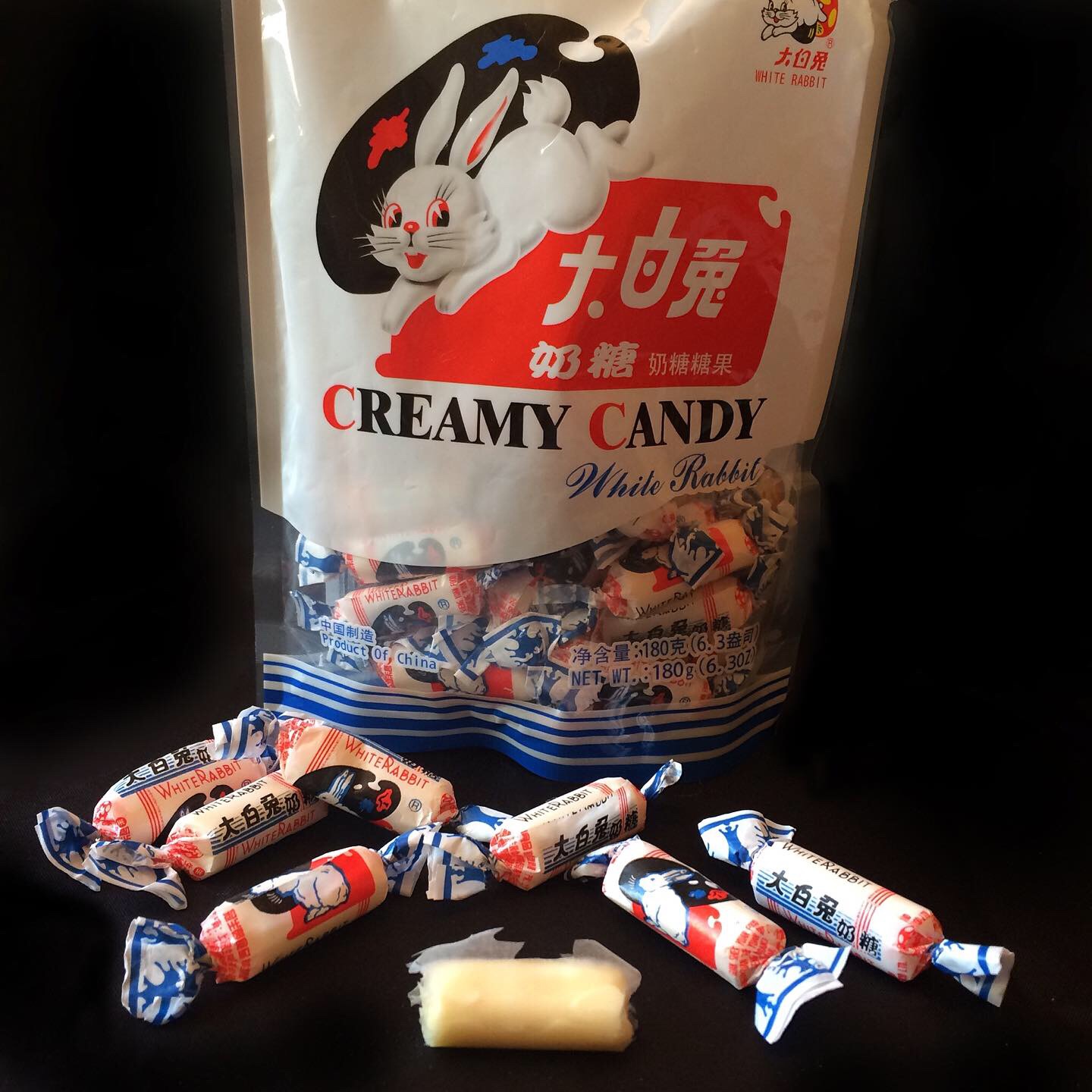
My first taste of Chinese candy came about when I was a kid; it was so very long ago that I can’t even remember which Dynasty it was. The novel confection was White Rabbit, a chewy, creamy, milk-based taffy (although technically, it’s toffee because it contains dairy) and it’s a godsend to dentists world-wide.

Years later, when boba drinks were just becoming the rage in Chinatown and the line for the solitary Tiger Sugar in Flushing coiled around the block, an enterprising challenger, With Sugar and Tea (long gone but not forgotten), opened up nearby. The flavor of its signature drink boasted spot-on doppelganger rabbitude.
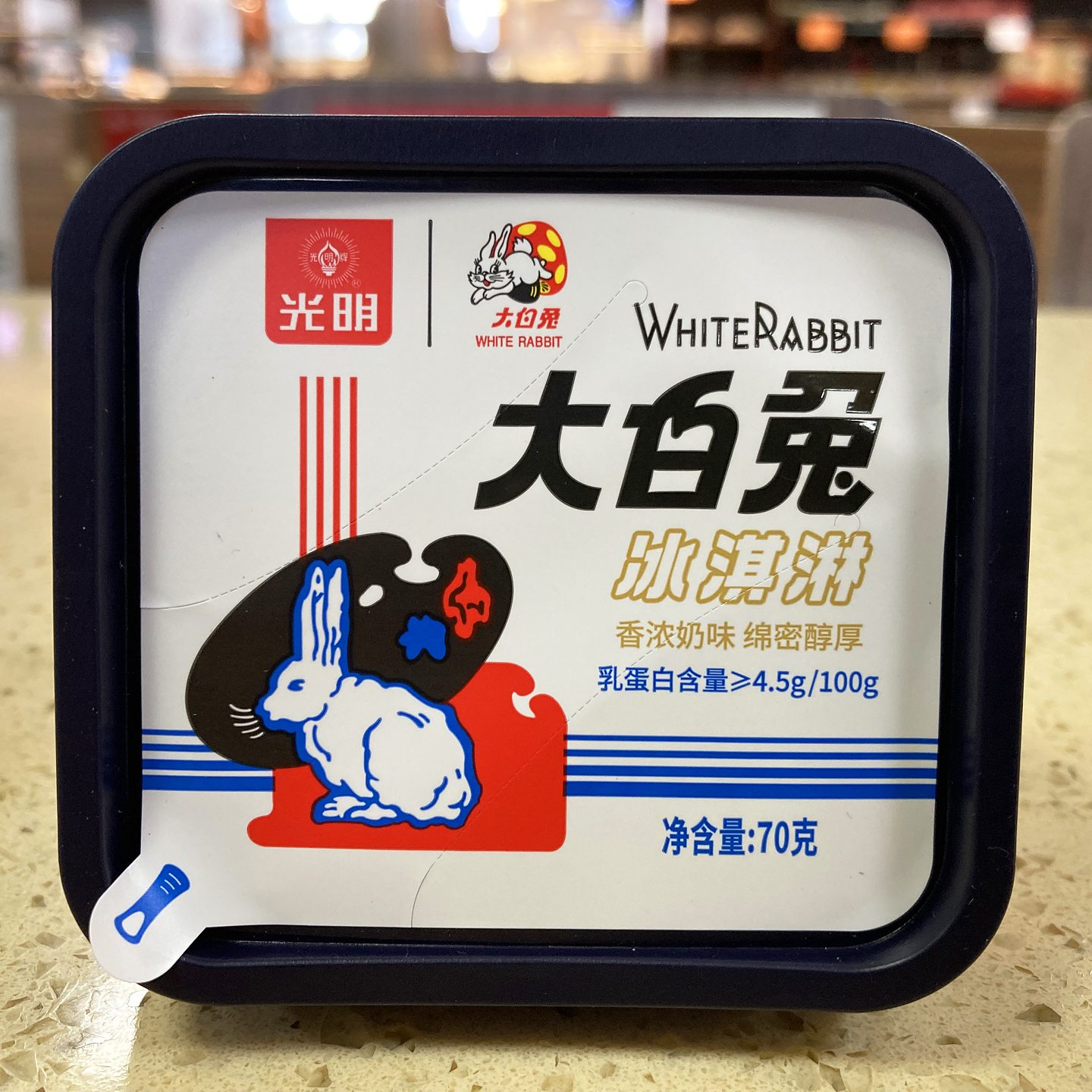
Three’s the charm, of course, and the ultimate rabbit out of a hat trick is this White Rabbit ice cream that I stumbled upon recently in SF Supermarket when I was prepping the 2023 version of my Elmhurst ethnojunket. It sports an ingenious lid that conceals a handy spoon and it definitely tastes like the real deal.

Which naturally raises the question (especially since this is the Year of the Rabbit) will we sample this delicacy on my Ethnic Eats in Elmhurst ethnojunket?
Only one way to find out. Check out my Ethnojunkets page and sign up to join in the fun!
As I indicated in my last post, some additional vendors have emerged at the new incarnation of Hong Kong Food Court (82-02 45th Ave in Elmhurst) and it’s my self-imposed duty to keep you informed about them!
I was encouraged to find a Burmese stall, Thar Gi, with a menu of about eight items including this Burmese Thick Noodle Chicken Salad.
(Click on any image to view it in high resolution.)
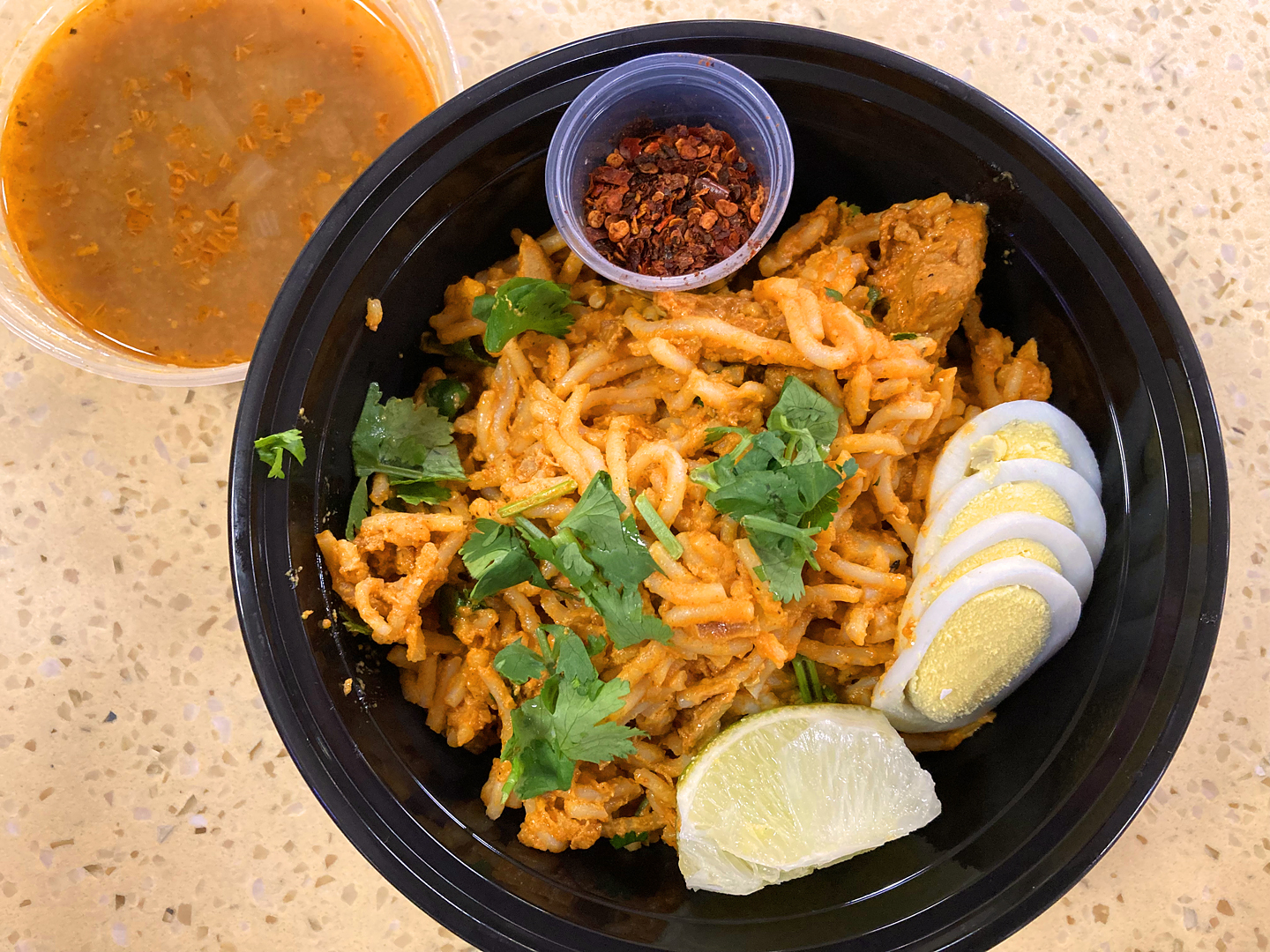
In addition to their standard menu, there’s a display case featuring a selection of dishes, mostly curries with various proteins and the same sauce, targeted for heating up at home. I asked if they could heat one up for me and this is their Beef Curry. They didn’t have rice. Go figure.
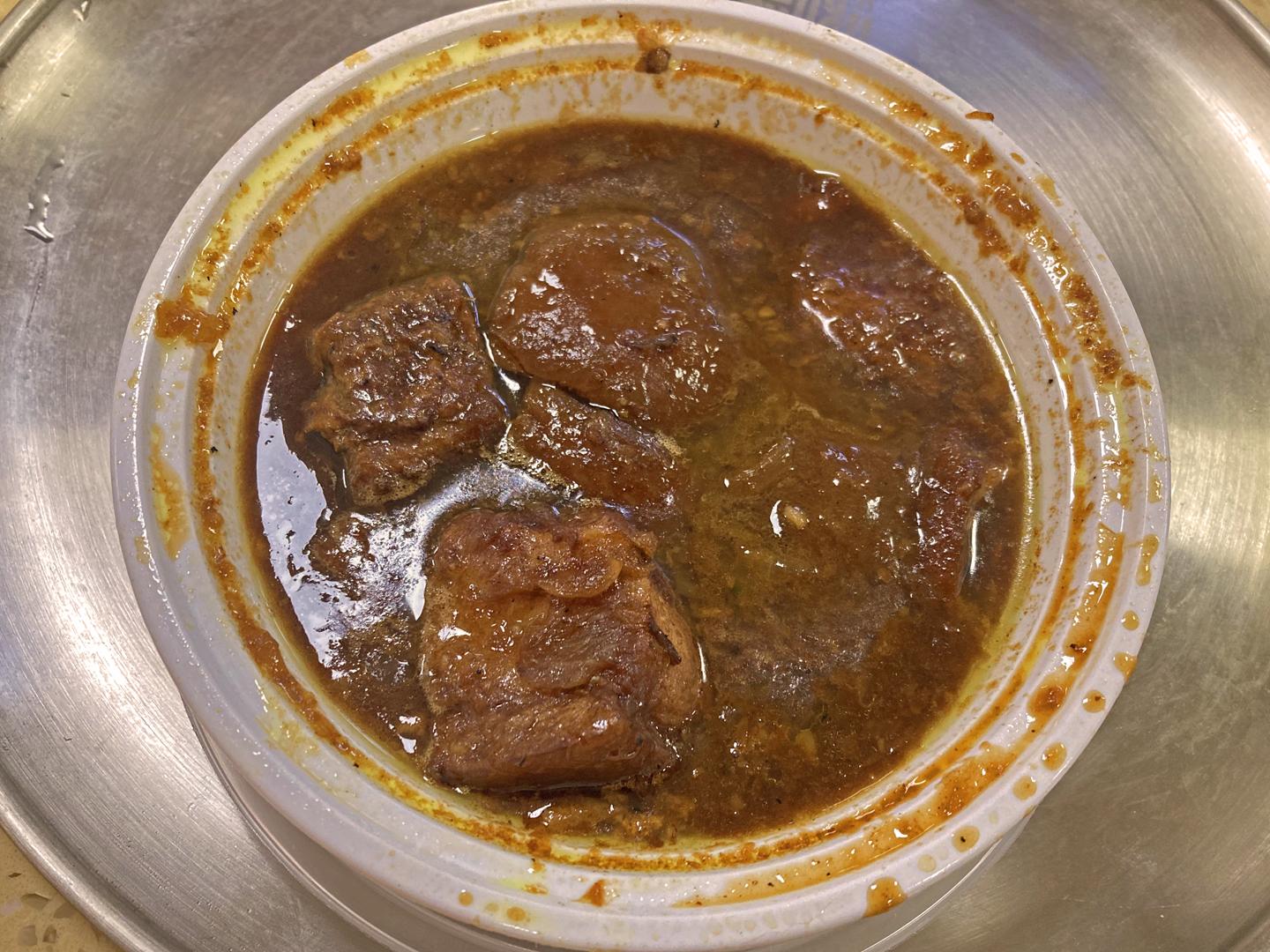
I’ve enjoyed a great deal of Burmese food over the years – even prepared some myself – and I’ve always been a stalwart fan. I was hoping for a little more personality from these two dishes. We’ll see if anything changes as they settle in.
And here’s one more from Lan Zhou Ramen, highlighted in my last post: Cumin Lamb Burger. Definitely tasty and on my Ethnic Eats in Elmhurst food tour!
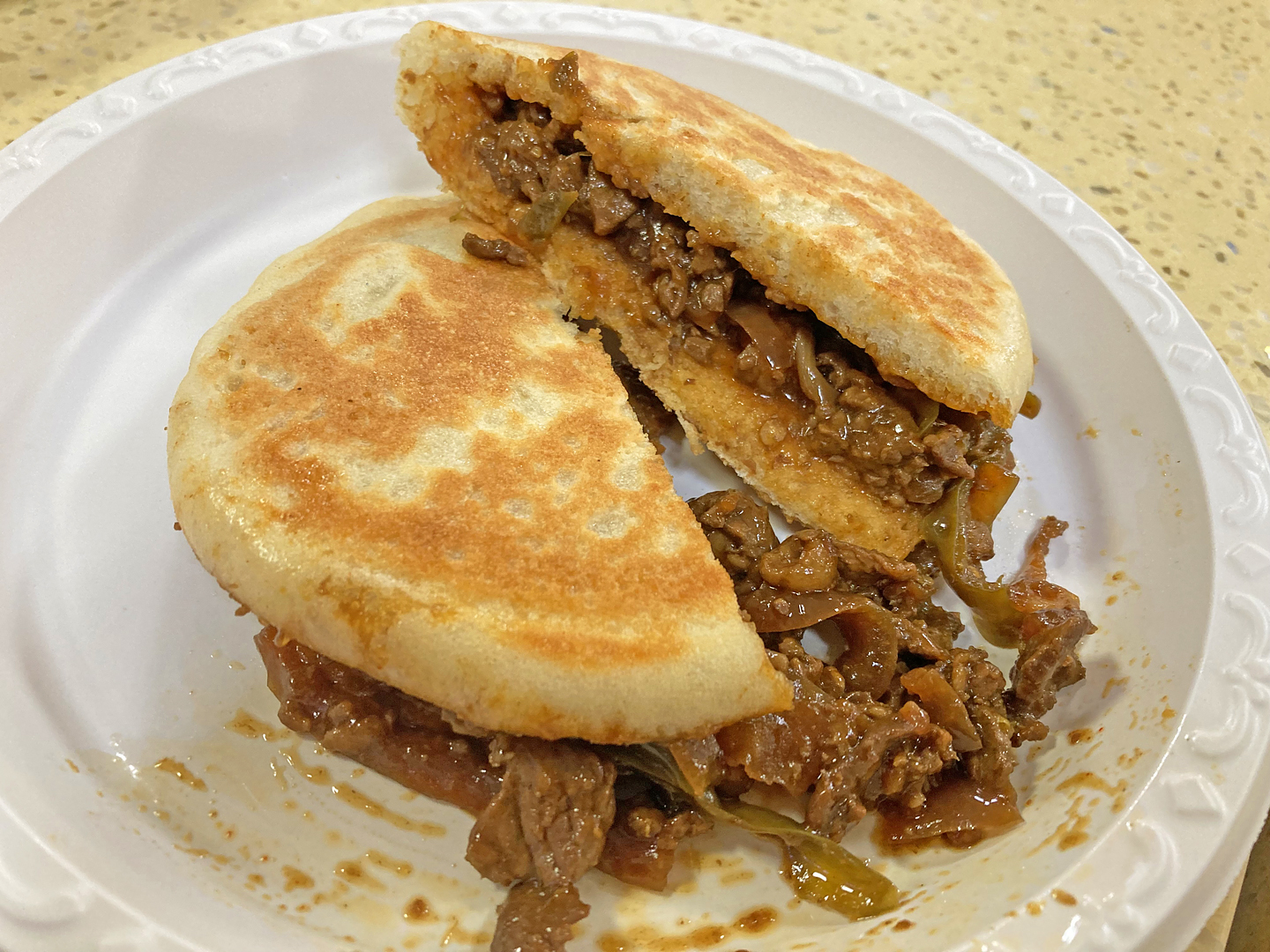
It’s coming along slowly but surely – not as slick-looking as any of the food courts in Flushing, but it’s the cuisine that counts, right?
Some additional vendors have emerged at the new incarnation of Hong Kong Food Court (82-02 45th Ave in Elmhurst) since I last wrote about it and one of the second batch is an outpost of Lan Zhou Ramen. (If you’re not familiar with their other locations, you should know that they’re more than just ramen.)
(Click on any image to view it in high resolution.)
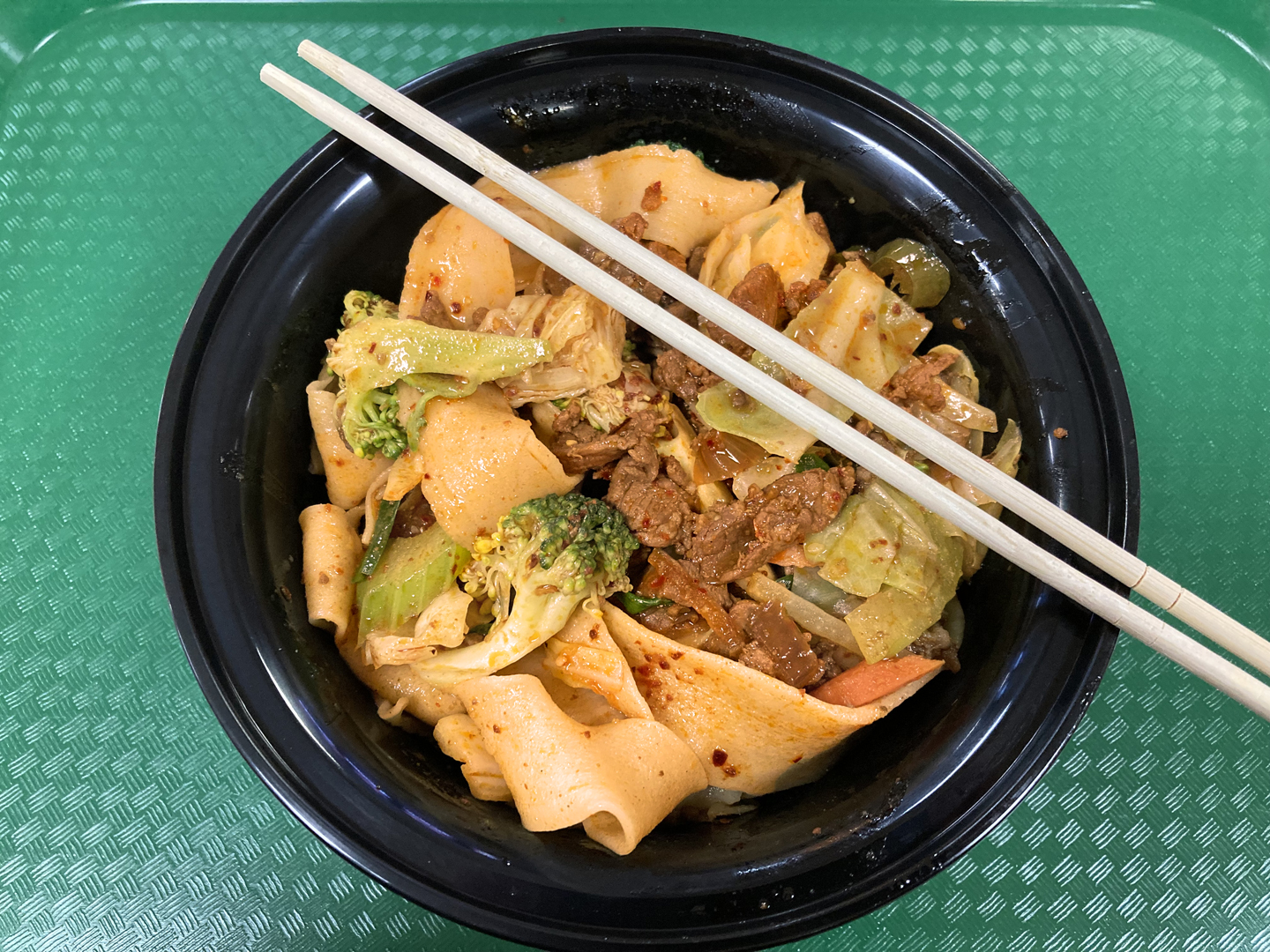
Their extensive menu included this admirable Cumin Lamb Noodle. The chef hand-pulled the noodles for my dish as I watched each step in the process; the noodz were as thick and chewy as I had hoped, the spice level was good, and the only thing I might have wished for was a bit more cumin presence – still, it was as satisfying as any I’ve enjoyed elsewhere.
And from the What-A-Long-Strange-Trip-It’s-Been Department: Their brightly lit signage, artistically inscribed with vivid red Chinese characters and identifying it as booth #23 looked familiar; certainly there are not 22 other stalls in HKFC’s current configuration. So when I got home, I checked the photo I had taken during their glory days back in 2019 and sure enough, it’s the selfsame sign.
Here’s hoping that’s a good sign!
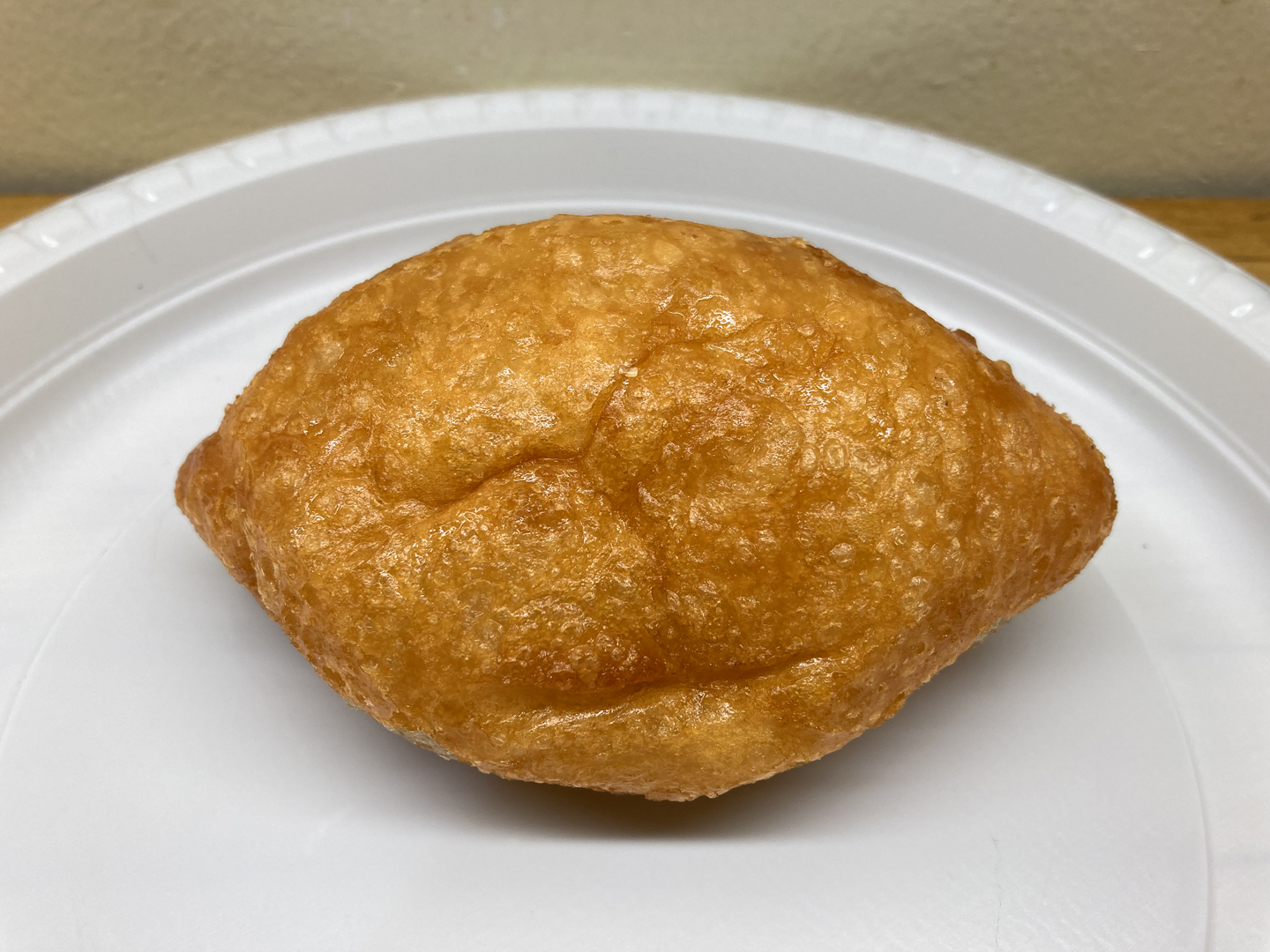
Passing the wide assortment of dim sum on my way out of the food court, I couldn’t resist this Ham Sui Gok (咸水角), always one of my favorites. It’s crispy fried on the outside…
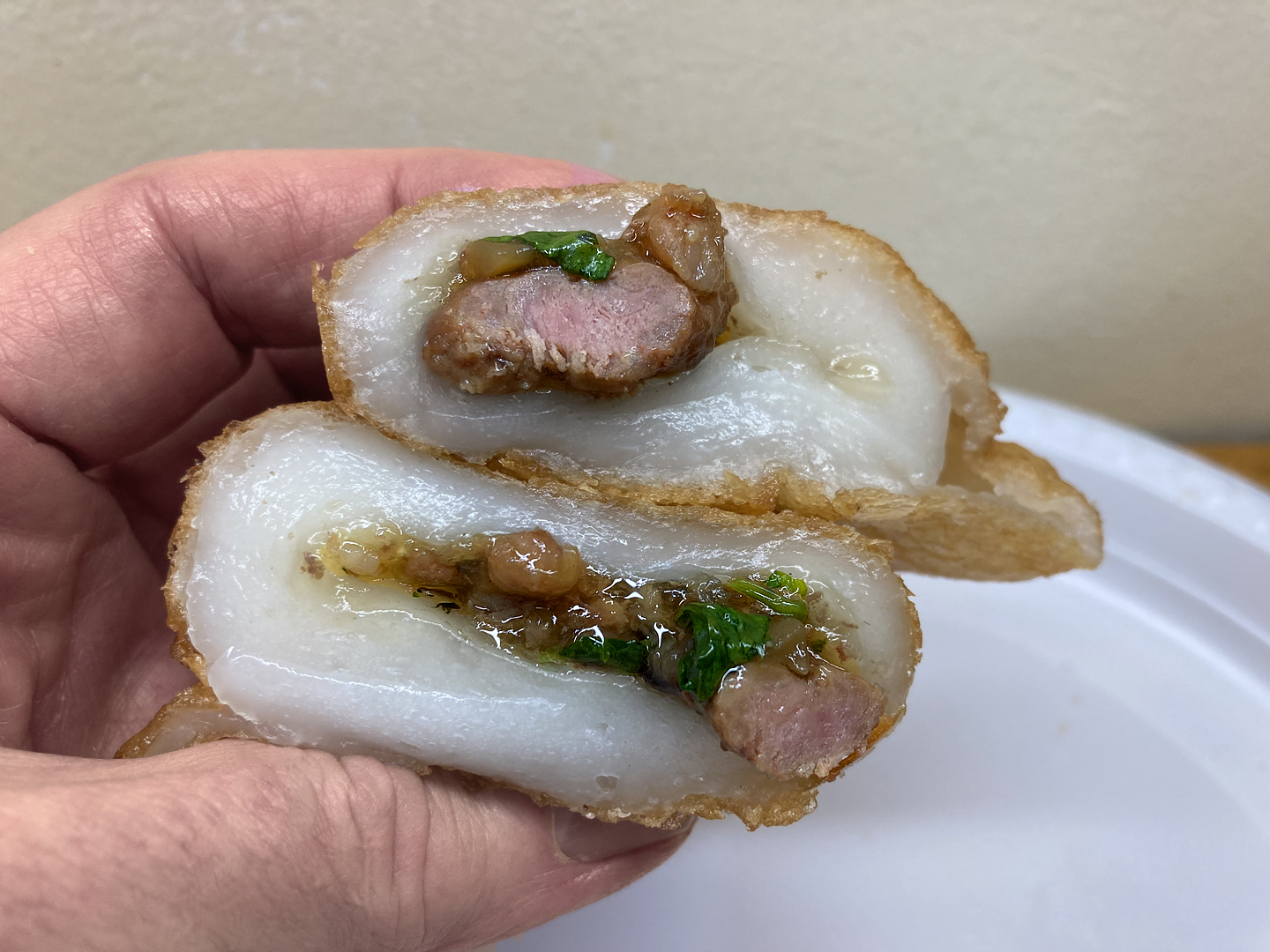
…with a chewy glutinous rice dough enveloping pork and perfectly sauced veggies on the inside; it’s sweet and savory at once and definitely filling.
Stay tuned for more new vendors – some I’m happy to report, are unique. And yes, of course, it’s a major stop on my Ethnic Eats in Elmhurst food tour!
(Click on any image to view it in high resolution.)
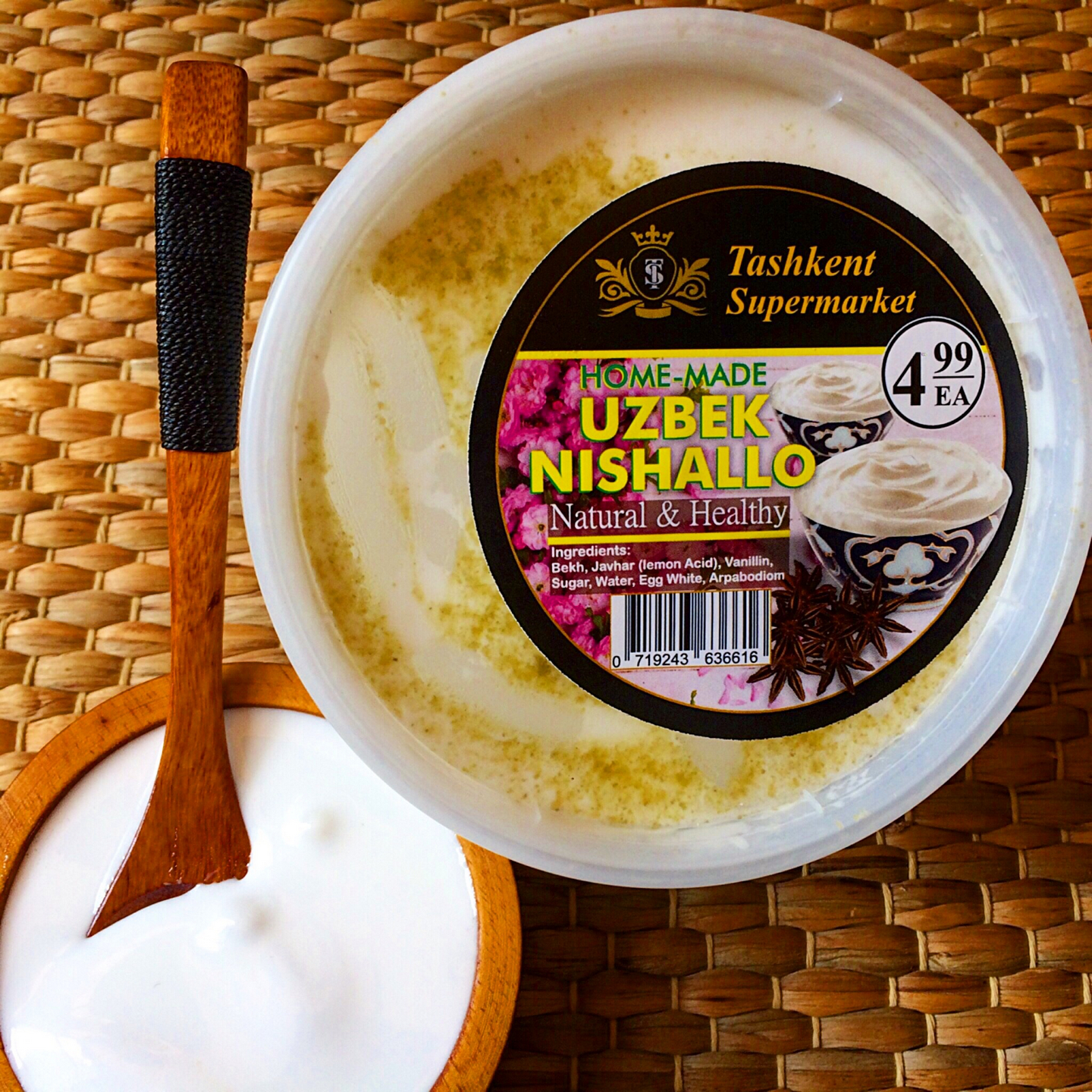
Ramadan is the ninth month of the Islamic calendar, the holy month in which the Qur’an was revealed to the prophet Muhammad; this year, Ramadan begins at sundown on Wednesday, March 22. During that period, about 1.6 billion Muslims around the world fast from dawn until dusk. The meal that marks the end of each day’s fast is called iftar and often commences with three sweet dates to help restore blood sugar levels, after which the menu will vary by country and regional specialties.
This is nishallo (aka nisholda), an exceedingly sweet dessert that’s native to Uzbekistan and Tajikistan and prepared exclusively during Ramadan; it makes its appearance as part of iftar. Made primarily from sugar, whipped egg whites, and water, it’s a dead ringer for Marshmallow Fluff (as you’d expect from the ingredients) if perhaps a bit classier because of a touch of star anise and/or licorice root. I understand that for some natives of Uzbekistan, it rekindles heartwarming childhood memories, not unlike Fluff for some nostalgic Americans. It’s often used as a dip for warm flatbread and is particularly appropriate after 10 to 17 hours of abstention from eating because its high sugar content is said to jumpstart the metabolism.
I found it, along with other Ramadan specialties like halim or haleem (see yesterday’s post), at Tashkent Market, 713 Brighton Beach Ave in Brooklyn, one of the highlights on my Little Odessa ethnojunket. If you like the idea of tasting something new and delicious from another part of the world, please visit my Ethnojunkets page to learn more about my neighborhood food tours and join in the fun!
More about Ramadan foods during the month.
Ramadan Mubarak!
Yesterday, I published a post about Nowruz, the Persian New Year, and fesenjan. But the vernal equinox is heralded as the first day of the new year by more than 300 million people worldwide, particularly in countries along the Silk Routes including Iraq, India, Pakistan, Turkey, Central Asia, and others. As a matter of fact, in 2010, the United Nations officially proclaimed March 21 to be the International Day of Nowruz. And of course, every culture has its own unique dishes to celebrate the occasion.
In Uzbekistan, it’s known as Navruz, and it may well be their most popular holiday. I consider myself fortunate to live not far from Brooklyn’s Tashkent Market, a sprawling center of appetizing prepared food indigenous to Central Asia and Eastern Europe, because it affords the opportunity to sample some authentic treats considered to be essential delicacies for Navruz.
(Click on any image to view it in high resolution.)
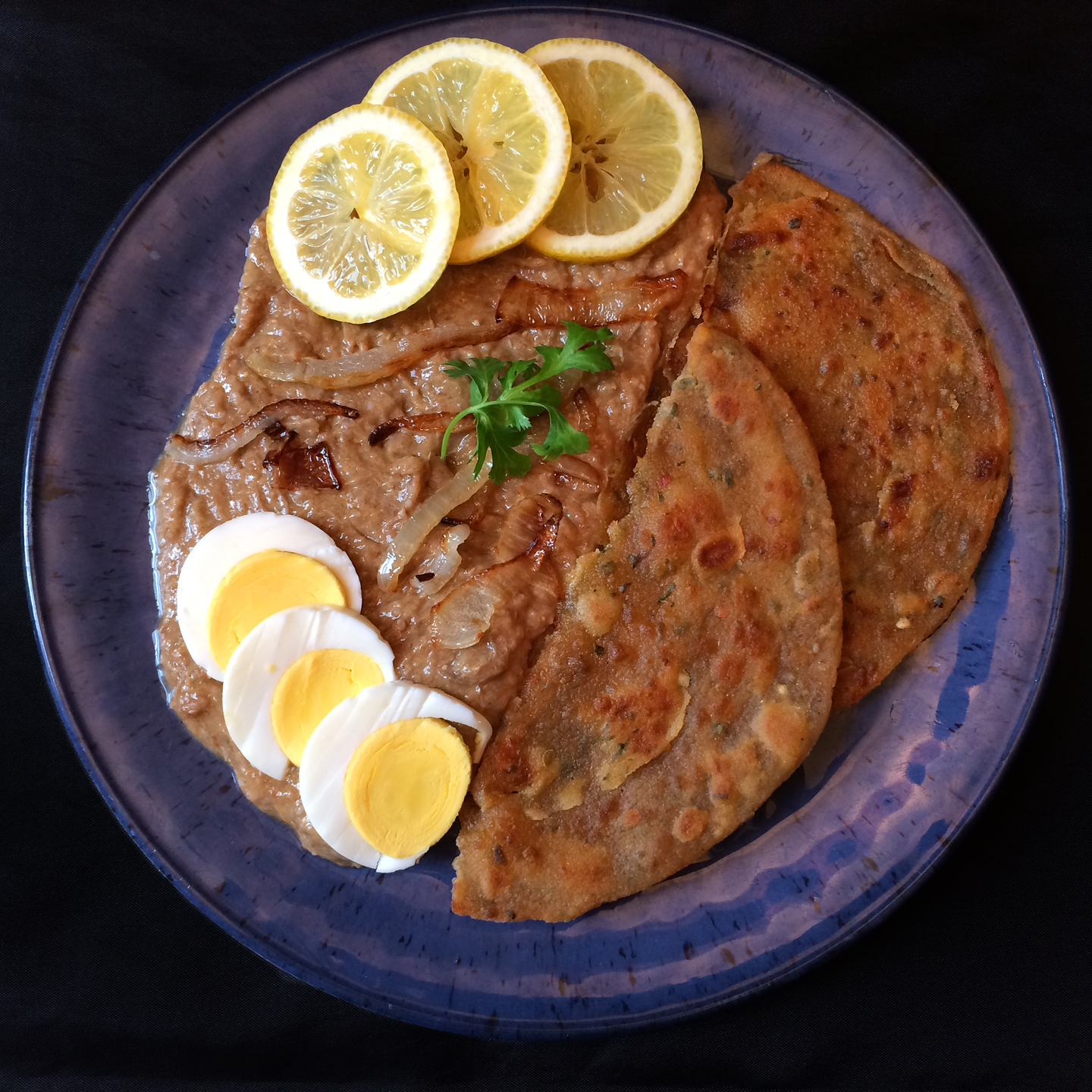
One such dish is a succulent meat paste (for lack of a better word – paté isn’t quite right) known as halim or haleem in Tashkent and halissa elsewhere concocted from pulverized meat, sprouted wheat, and flour; it takes about 12 hours to cook it down to delicious perfection. I’ve plated it here with griddled flatbread, sliced hard boiled eggs, and caramelized onion.
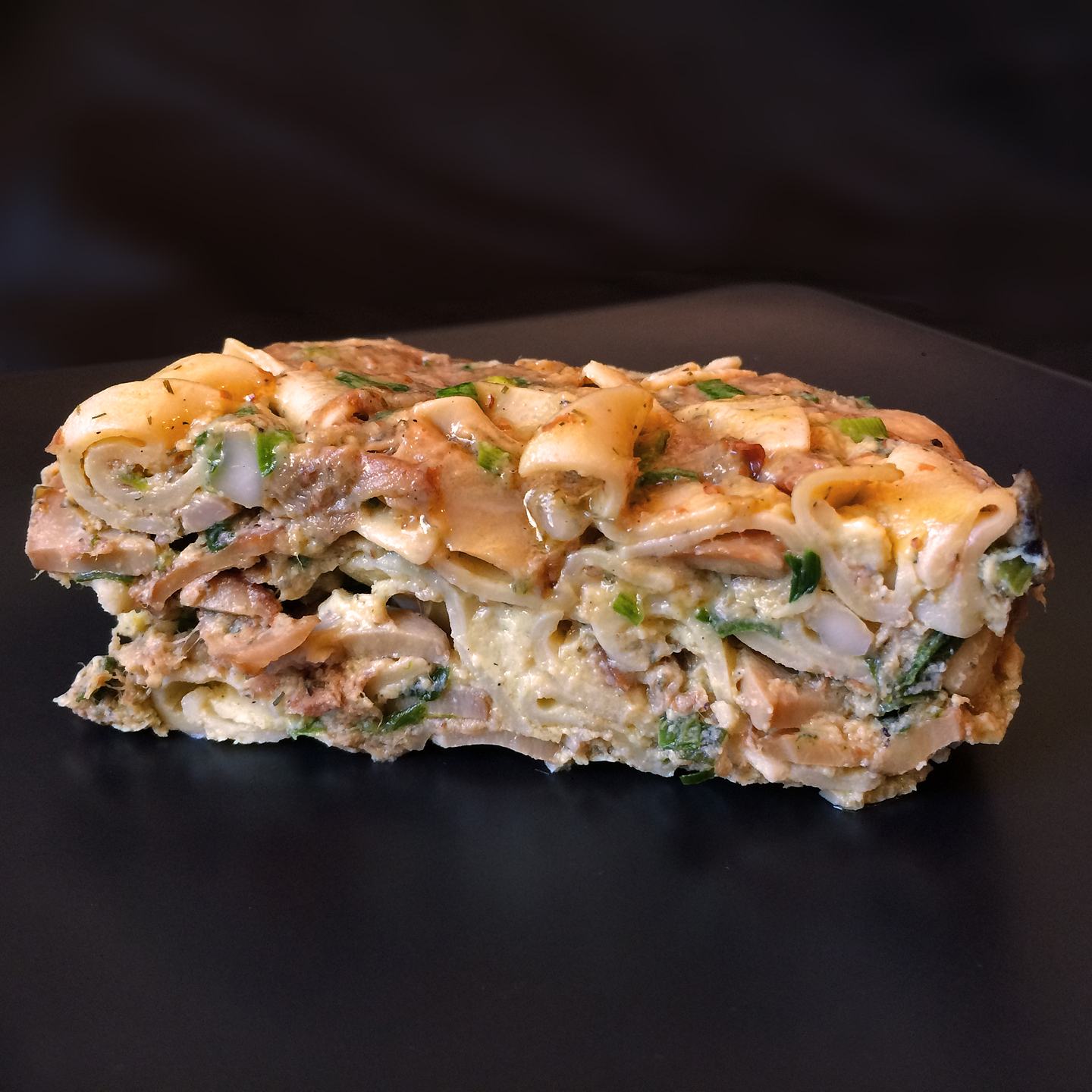
One time I decided to see how I might incorporate it into a dish rather than consuming it straight up, so I cobbled together a noodle kugel (Yiddish for pudding) with sliced fresh mushrooms, sautéed leeks and other good stuff (hey, I was improvising) that I thought would do the halim justice and serve to make it a little less monotonous. Really yummy, if I do say so myself.
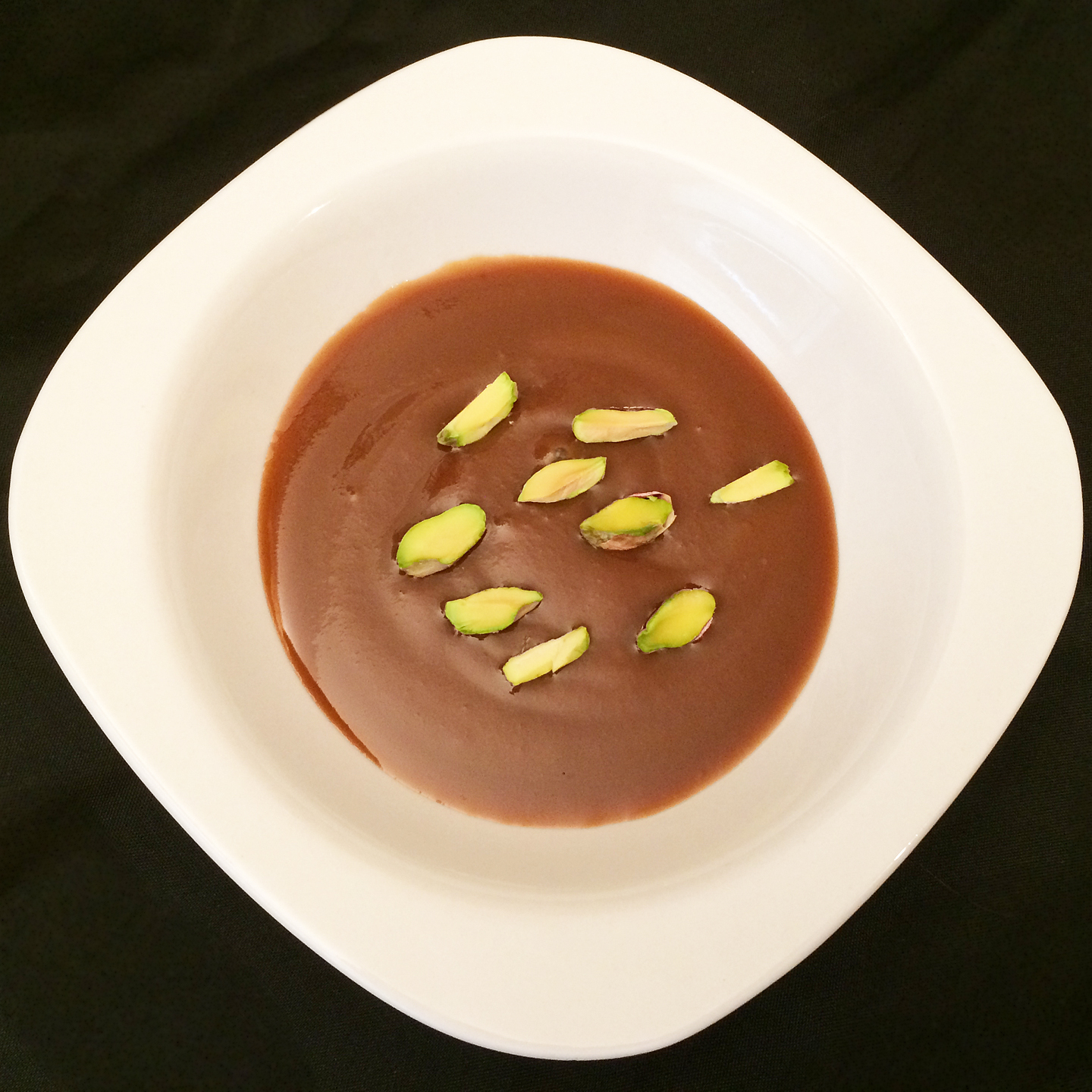
Another quintessential dish served for Navruz in Uzbekistan is sumalak, a traditional sweet pudding whose sole ingredient is sprouted wheat. The age-old process of preparing it is a ritual that fosters brotherhood, cooperation, and unity: Each family brings a handful of sprouted wheat to be cooked together overnight in a kazan, an enormous common cauldron; it must be stirred constantly lest it burn with a shovel-like implement traditionally wielded by women. (I hear that men make the halim.) As the sumalak thickens, it becomes more difficult to stir so the women work in shifts mixing the dense pudding. When it’s ready, it’s shared by neighbors, relatives, and friends; there’s even a role for the children in the heartwarming legend.
How this dish turns into something sweet is a miracle in itself as far as I’m concerned.
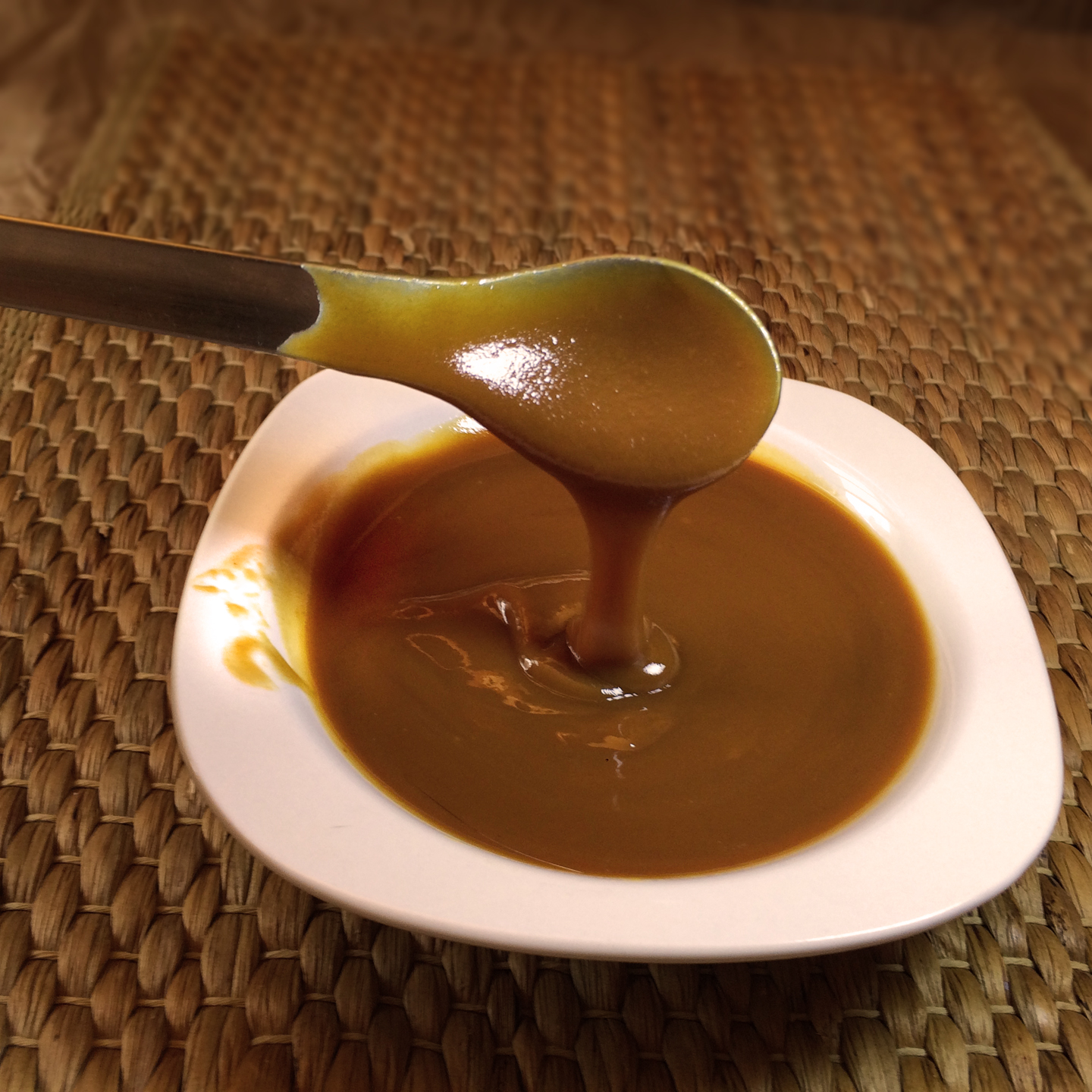
To give you an idea of the viscosity.
And yes, both of these goodies along with many more are available at Tashkent Market, one of the highlights on my Little Odessa ethnojunket. It’s coming soon, so watch this space!